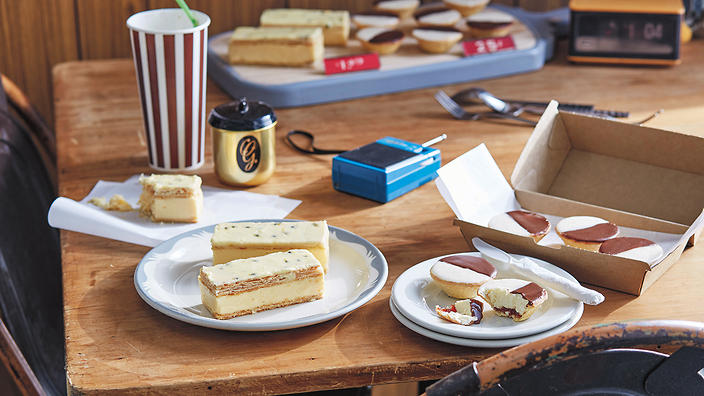Musk sticks, milkshakes, burgers with beetroot and Icy Poles, what it is about milkbars that will always have a place in our hearts? Read on for my very first feature story for SBS Food!
By Melissa Leong
Before the days of branded strip malls and hyper accessible fast food, were simpler times. Times when we didn’t think about quitting sugar and where anything (well, almost anything) could come battered and fried.
Whether your childhood roots lie in the city, the country or possibly more crucially in the neighbourhood suburbs of this wide brown land, a trip to the milkbar with your friends has long been a beloved rite of passage when it comes to growing up in Australia.
For many of us, milkbars gave us our first taste of the concept of saving and spending, treats and indulgence. From blowing your hard earned pocket money on a bag of red frogs or musk sticks, discovering the joys of biting into a sloppy hamburger with the lot, egg yolk and beetroot juice running down your arms, or riding your bike with your mates in the searing summer heat in pursuit of an icy treat – then having to ride all the way home again - almost everyone who spent some part of their childhood growing up in Australia can recount a fond milkbar memory.
Milkbars were the cornerstones of our communities. A multi-purpose, family-friendly (and often family-run) local establishment, where people would get the down low on local gossip, meet up with friends or make new ones. It meant sweet treats for kids, a night off cooking (and a lazy indulgence) for parents, it was also the purveyor of the paper, the milk and the occasional cheeky packet of cigarettes. Over time, these establishments may have faded from memory and become superseded by economic reality, but there’s no question of their contribution in the decades when they were king. Milkbars were not only a crucial part of Australian food culture for nearly half a century, but also influenced the way many of us connected with neighbours.
The first business named a ‘milk bar’ was opened in Bangalore, India by a Brit named James Meadow Charles in 1930, but closer to home, it was Mick Adams - also known by his OG (original Greek) name of Joachim Tavlaridis - who is said to have opened Australia’s first milkbar, in Martin Place, Sydney, not too long after.
Wanting to provide an alternative style of hospitality establishment to the hard drinking Australian pub culture that continues today, he created a more family-friendly option, modeled on American-style drugstores, which served up sundaes and milkshakes and wholesome good times. In her book Milkbar Memories (Murdoch Books RRP $39.99), author Jane Lawson goes on to note that over the next 5 years, nearly 4,000 more milkbars like Mick’s were opened, mainly run by Greek families following the groundswell of European immigration, around Australia. Throughout the next decades, every neighbourhood, country town and city corner became home to the institution of the milkbar.
For the young, and those newly introduced to Australia, milkbars represented an opportunity to dip a toe in the water when it came to discovering Australian food culture at a grass roots level. Favourites might include chest freezers full of chilly treats, from Icy Poles to Golden Gaytimes and Cornettos, or frothy milkshakes in chocolate, vanilla, strawberry or caramel and where the only thing green in a drink was lime flavouring.
And then there’s the Aussie milkbar burger. Not to be mistaken for an imitation of its American cousin, a proper Australian milkbar burger doesn’t come on a steamed bun, but one made of denser, more substantial stuff. You need that structural integrity after all, to hold in the hefty layers of juicy beef, shredded iceberg lettuce, tomato, cheese, beetroot, bacon, egg and… if you’re feeling tropical, a pineapple ring. Regionally, there are Dagwood dogs, potato scallops, battered fish, meat pies, sausage rolls, dim sims, Chiko rolls and everywhere, everyone fought over the extra crunchy chips.
Our fondness for these foods are not, of course, was never for their nutritional value, but for their nostalgic one; an association with youth, family and a feeling of community connectedness that we yearn most for in the face of increasingly globalised, commercialised and homogenised existence.
Love the story? Follow the author here: Twitter @fooderati Facebook fooderati, Instagram @fooderati
Feeling nostalgic? We want you! For the month of November, SBS Food are asking food lovers far and wide to get creative by putting a multicultural twist or your creative spin on an Australian classic... Welcome to #BringBackTheClassics - enter now!





